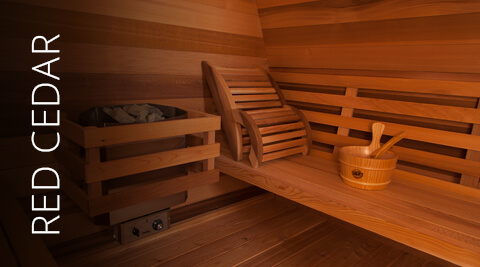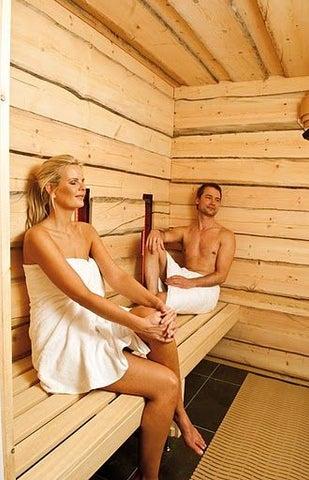Traditional Sauna for Dummies
Table of ContentsThe smart Trick of Traditional Sauna That Nobody is Talking AboutThe Ultimate Guide To Traditional SaunaAn Unbiased View of Traditional SaunaSome Known Facts About Traditional Sauna.The smart Trick of Traditional Sauna That Nobody is Discussing
Many of the weight lost in a sauna is water loss and is re-gained upon rehydrating. Without a doubt sauna can be an important component of a healthy and balanced weight loss program. To consider the distinctions in between typical and IR saunas, I will certainly divide these right into proven, academic, and made distinctions.Therefore, the best factor in the saunawhich is at the ceiling straight above the sauna heateris commonly between 185 and 190 F. Claims that a standard sauna surpasses 200 F is just not real and not appropriate for electric saunas marketed in the US. The temperature for a far-infrared sauna is usually established between 120 and 140 F; nevertheless, unlike the traditional sauna, the goal in and IR space is not to attain a high temperature.

When a traditional sauna has actually been correctly heated up, the sauna walls are cozy, the air temperature has actually attained established temperature level and the rocks are extremely heated. As an intriguing side note, the warmed walls and the rocks are emitting far-infrared warm, combined with the warmed air, to produce an "wrapping up heat".
Not known Facts About Traditional Sauna
When the heat is achieved, the aspects cycle on and off to maintain the high temperature. The majority of conventional sauna users delight in putting water over the rocks to develop heavy steam to raise sauna humidity levels. The benefits of pouring water over the rocks consist of: making the room much more comfy, dampening the nasal passages, and allowing the use of aromatherapy by mixing necessary oils with the water.

When the energy gets in the body, it causes the body temperature to increase and ultimately leads to perspiration. In an infrared sauna it is essential for the emitters/heaters to continue to more be on almost frequently. Considering that there is no mass of rocks to preserve warm, the sauna will cool down if the emitters turned off.
The Of Traditional Sauna
As stated over, the sauna bather in an infrared space wishes to place himself in front of running emitters to get optimal benefit from the warmth. The heating time for both spaces can be very various, relying on how the areas are made use of. For a conventional sauna, a bather should allow 30-40 mins for the room to attain a desired temperature and to correctly pre-heat the rocks.

A well built sauna will normally achieve a temperature of 150-160 F in regarding 30-40 mins. For hotter temperatures, the area might require to warmth for a longer duration.
To some, 15 mins was "wasted" while the infrared energy heated up the wood click over here now panels rather than heating up a body, while others discover a pre-heated space to be much more comfortable and think an elevated beginning temperature level is necessary to begin perspiring. The size of advised usage for each and every space is around the very same (10-15 minutes per session); nevertheless, due to the lower air temperatures and the ability to feel the impacts of infrared warm faster than a typical sauna, it is not uncommon for an individual to invest a total amount of 20-30 mins in an infrared sauna.
Little Known Questions About Traditional Sauna.

The ordinary expense per kWH of power in the U.S. is around $0.11, so a 4.5 kW heater will cost about $.50 to run for one hour, if the heating unit runs continually for one hour. Typically a sauna heating unit will run for 75% of the very first hour and 50% of succeeding hours on given that the aspects cycle once the established temperature level is achieved.
A two person far-infrared area is usually physically smaller than a typical sauna, typically regarding 4' x 4' or smaller sized. The IR heater is usually 1.5-1.7 kW utilizing a 120 volt 15 amp plug-in service. Since the room can be used sooner than a sauna space, we will certainly presume the space is utilized for to of an hour including warm up time.
There is a rarely gone over difference in the social experience in between the 2 areas. While our culture has actually shed several of the social advantage of the typical sauna experience, it can be very socially gratifying (Traditional Sauna). From household time in the sauna, to heart-felt discussions with considerable others, to sauna partiesthe great post to read conventional sauna experience can lead to intimate socializing
Traditional Sauna Things To Know Before You Buy
The majority of higher end infrared areas include colored light treatment, noise systems and full-glass fronts.